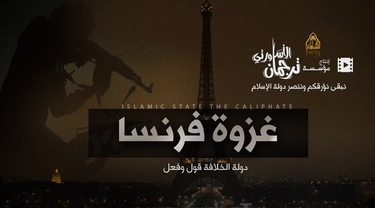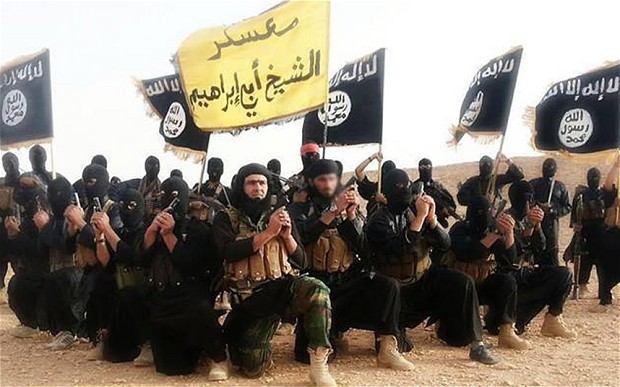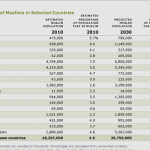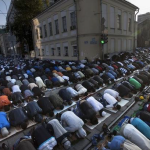
 Images of the moment suspect in Paris attacks was captured.
Images of the moment suspect in Paris attacks was captured.MiddleEastEye: French prosecutors said seven people carried out the attacks in Paris on Friday, all of whom were either killed by police or killed themselves with suicide vests. Meanwhile, French police are hunting with Belgian police for a suspected “sleeper cell” linked to the attacks.
Authorities have released the identities – or assumed identifies – of five thought to be directly involved in the Paris attacks, and two others believed to have either planned or aided them. Here are the details and backgrounds of those known so far:
Alleged mastermind – Abdelhamid Abaaoud
A French official told the AP news agency on Monday that Abaaoud is a Belgian and the suspected mastermind of the Paris attacks. They released few details, but also linked him to an an attempted gun attack on a Amsterdam-Brussels-Paris train on 21 August, which was thwarted by passengers. RTL radio in France reported that the 27-year-old is of Moroccan origin and “one of the most active Isis executioners” in Syria. He was interviewed in the Islamic State (IS) English-language propaganda magazine Dabiq under the nom de guerre, Abu Umar al-Baljiki.
Bataclan attacker – Samy Amimour
Described by prosecutors as a 28-year-old Frenchman. Amimour was one of three people who attacked the Bataclan concert venue, with 89 people confirmed dead. Prosecutors said Amimour had been charged in a terrorism investigation in 2012, was placed under judicial supervision and was the subject of an international arrest warrant.
Amimour was reported as having lived in the north-eastern suburb of Drancy.
Prosecutors said Amimour was “known to anti-terrorist investigators for being charged on October 19, 2012 for conspiracy to commit terrorism” over a foiled attack in Yemen. He violated his judicial supervision in 2013, prompting judges to issue an international arrest warrant. His family told AFP, in an interview before Friday’s attacks in Paris took place, that he had gone to Syria in 2013.
Bataclan attacker – Ismael Omar Mostefai
The 29-year-old French national was identified by French officials by DNA from a severed fingertip. Mostefi had a record of petty crime in France and had been identified by police as “radicalised”. Turkey on Monday said that they had warned France on two occasions about Mostefi’s activities.
He was reported to have been raised in Courcouronnes in Essonne, 25km south of Paris. His parents, or at least his father, is believed to have been of Algerian descent and his family now lives in the small town of Romilly-sur-Seine, a small town 130km east of Paris.
Mostefi’s 34-year-old brother contacted police on his own initiative before being taken into custody, along with his father. The father’s home in Romilly was searched, along with his brother’s home in nearby Bondoufle.
Stade de France bomber – Ahmad al-Mohammad
A suicide bomber, who blew himself up outside the Stade de France stadium, was found with a Syrian passport with the name Ahmad al-Mohammad, a 25-year-old born in Idlib. The prosecutor’s office says fingerprints from the attacker match the passport, which passed through Greece in October. Greece says he was one of two attackers who passed through their territory in the months before the attack. Serbia yesterday said the passport was also registered at the Presevo border crossing on 7 October, where he formally sought asylum.
Whether Mohammad is the real name of the attacker remains in doubt, however. The passport had been reported fake in the days after the attacks in Paris, and there is a thriving trade in the Middle East for such items. Prosecutors in France on Monday said the name “remained to be verified”.
Stade de France bomber – Bilal Hadfi
Identified by investigation insiders as a 20-year-old French national who had been living in Belgium. He is reported to have fought for the Islamic State (IS) in Syria.
Restaurant attacker – Brahim Abdeslam
Officials identified Abdelslam as an attacker who blew himself up near a cafe on the Boulevard Voltaire. He was described as a French national and the brother of Salah Abdelslam, who is the subject of an arrest warrant over the Paris attacks.
Alleged fixer – Salah Abdelslam
Abdelslam, a 26-year-old born in Brussels, was arrested late Monday morning. Authorities said Abdeslam rented a Volkswagen Polo that carried attackers to the Bataclan concert venue. French officials told the AP news agency on Saturday that police had questioned and released him early in the day after stopping a car carrying three men near the Belgian border. An arrest warrant, describing Abdelslam as armed and dangerous, had been issued hours before.







